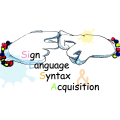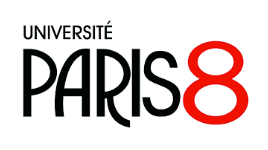
Charlotte Hauser
This project is funded by the ANR (Agence Nationale de la Recherche) under grant number : ANR-23-CE28-0022-01.
This project aims to fill the gaps in the description of French Sign Language Syntax and Acquisition (SiLSA).
A necessary first step in this direction will be descriptive, as much is still unknown about the syntax of French Sign Language (LSF), particularly when it comes to complex sentences. At the end of our research, we will be able to determine whether cases of subordination surface in LSF for adverbial clauses, for which ones, and in what shapes. It will allow us to identify any shared pattern across adverbial clauses to mark subordination, but also across types of subordinated clauses, hence helping us complete LSF complex sentences grammar. Fulfilling the description of adult grammar will then allow us to start investigating children's path of acquisition of complex sentences.
Comprehension of complex sentences poses difficulties to typically developing hearing children aged 6/7 y.o. (Bowerman, 1979), and native deaf children as well (Reilly et al., 1990). But native deaf signers, exposed from birth to a sign language (SL), are a minority (5-10% only, Kushalnagar et al., 2010). Thus the second step of SiLSA aims at investigating LSF’s acquisition, across the variety of linguistic profiles that exists in deaf children. On top of this, deaf children are in general also exposed to the surrounding spoken language through hearing-aids, lip-reading or coded-language. As such, the assessment of their language development has to be considered within the broader domain of bilingual studies, and especially through the lens of minority language bilingualism.
Thus, in parallel of the second step, the third step of SiLSA will have to assess language proficiency in written French. We chose not to evaluate oral French since it would put bias the results in favor of deaf children receiving intensive oralist training, who, most likely, attend to oralist-oriented schools. As such, assessing the oral modality is rather an estimate of the success of this training in that specific task rather than an estimate of language competence. A battery parallel to that developed for the second step will be administered to the older children (from 8 to 13 y.o.) to see if any difference can be found across modalities. The tests will be carried across two types of deaf institutions: oralist schools and bilingual LSF-French schools to see if the change in setting affects children’s performance. On top of helping us unveil the acquisition path of both languages in Deaf children, the outcomes of our research will have a broader impact as it will help parents and policy makers to make decisions regarding pedagogy according to their priorities.
PI: Charlotte Hauser (Associate Professor, Université Paris 8, SFL-CNRS)
Advisor on Syntax/SL related matters: Carlo Cecchetto (Professor, Università Milan-Bicocca, SFL-CNRS)
Advisor on psycholinguistics related matters : Saveria Colonna (Professor, Université Paris 8, SFL-CNRS)
Post-doctoral researcher to be announced
Post-doctoral researcher to be announced



